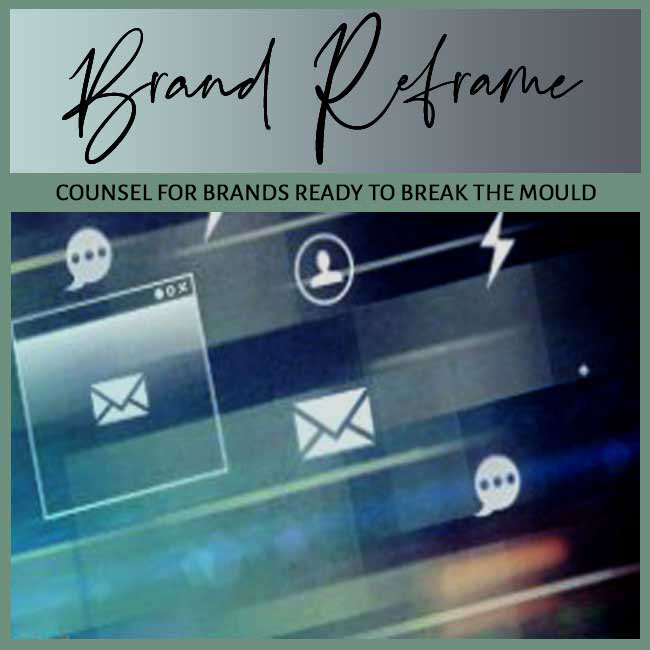
BY: SHOBHA PONNAPPA | BRAND BREAKTHROUGH STRATEGIST | 45 YEARS | 125+ CLIENTS
Brand imitation is the practice of replicating elements of another brand’s identity, products, or strategy to benefit from its recognition and reputation. It ranges from copying logos and packaging to mimicking campaigns, customer experience, or storytelling. While some imitation is unethical and illegal, other forms are strategic learning from market leaders. Understanding imitation helps protect your brand and leverage competitive insights. Brands that ignore imitation risk erosion of uniqueness and customer trust. Brand imitation is both a threat and a source of competitive learning.
In my decades of consulting, I have seen that brands often underestimate how easily they can be copied. Start-ups mimic category leaders to appear credible fast. Large brands face knock-offs that undercut price and dilute prestige. Even subtle imitation of tone or digital experience can confuse audiences. Protecting and evolving identity is vital to staying distinct. Awareness and action against imitation preserve brand equity powerfully.
Digital channels make copying faster and harder to control. Logos, ads, and product ideas spread instantly and inspire replicas globally. AI design tools accelerate imitation with minimal cost. Customers bombarded by similar visuals or messaging struggle to tell brands apart. Weak defences mean losing pricing power and recognition. Imitation can drain differentiation faster than ever before.
A proactive stance on imitation creates long-term strength. Brands that monitor, protect, and evolve stay ahead confidently. Legal safeguards and design patents build a moat against blatant copying. Innovation cycles move faster when brands expect competitors to follow. Thoughtful storytelling adds depth that is harder to duplicate. Staying vigilant and innovative protects authority and market share.
Distinctive identity is the first defence against imitation. Generic visuals and vague positioning make copying easy. I help brands define unmistakable look, feel, and message tied deeply to their purpose. This includes unique design elements, tone of voice, and emotional territory. When identity is specific and meaningful, imitators appear hollow and obvious. Defensible identity deters and diminishes copycats.
Clear identity also strengthens legal protection. Trademarks and copyrights are easier to secure for distinctive assets. Customers spot and reject fakes faster when your brand has clear markers. Internal teams create consistent output that reinforces uniqueness repeatedly. Over time, distinct identity becomes a recognised market signature. Legal and emotional clarity builds powerful protective equity.
Brands must actively watch for imitation rather than react too late. Social listening, e-commerce scans, and competitor audits reveal early copycat activity. I guide companies to build monitoring systems that track visuals, product features, and campaigns. When infringement occurs, legal action can protect rights and signal seriousness. Patents, trademarks, and design registrations strengthen defences. Proactive monitoring stops damage before it grows.
Legal protection also builds reputation as a brand that defends itself. Copycats think twice when enforcement is visible and consistent. Investors trust brands that protect their intellectual property actively. Even small firms can use accessible legal tools effectively. Collaboration with specialist counsel strengthens response strategy. Strong legal posture discourages opportunistic imitators powerfully.
The best way to stay ahead of imitators is constant evolution. Stale brands give copycats time to catch up and erode differentiation. I help leaders plan innovation cycles in product, experience, and storytelling. Refresh keeps the brand one step ahead, making imitation outdated quickly. Innovators shape markets instead of reacting to them. Continuous improvement is the ultimate anti-copy strategy.
Innovation also energises internal teams and loyal customers. Employees feel proud of being part of a brand that leads rather than follows. Customers enjoy novelty and stay engaged when offerings evolve meaningfully. Media and influencers amplify brands seen as pioneers. Regular refresh turns imitation into proof of leadership. Evolution keeps competitors chasing while you stay relevant and admired.
Storytelling creates layers of meaning beyond what copycats can replicate. Facts and features are easy to duplicate, but authentic story is not. I guide brands to share founder journeys, customer impact, and cultural values consistently. Communities built around these stories become loyal advocates. Copycats struggle to recreate emotional depth and belonging. Rich narrative shields against shallow imitation effectively.
Community also acts as early defence and amplification. Loyal fans expose imitators and defend the brand passionately online. Engaged groups spread authentic stories faster than fakes can mislead. Advocacy strengthens credibility and discourages counterfeit attempts. Deeply connected customers become guardians as well as promoters. Community loyalty protects and multiplies brand uniqueness powerfully.
Founders should design brands with distinctiveness in mind early. Too many young companies choose generic visuals or trendy templates easy to copy. I advise investing in strong original design and securing trademarks quickly. Build a compelling story anchored in truth to create emotional depth. Start monitoring markets for lookalike activity from launch. Early defence prevents future brand dilution effectively.
Authenticity is essential when building copy-resistant brands. Avoid borrowing heavily from competitors or category clichés. Be bold in crafting identity that fits your values and customers, not just trends. Protect assets legally as soon as possible rather than delaying. Launch with clear ownership and defend politely but firmly when needed. Authentic, protected beginnings set the tone for strength.
As brands scale, they often face more imitation pressure. Leaders must keep refreshing and innovating while protecting core assets. I recommend periodic audits of visuals, messaging, and product uniqueness. Update legal protections and renew trademarks as markets expand. Communicate new stories and reinforce cultural depth. Sustained defence and evolution preserve distinct leadership.
Cross-functional alignment also matters. Legal, marketing, and product teams should work together on protection and innovation. Employees should know how to spot and report imitation quickly. Data from customers and partners can highlight copycats early. Staying agile while protecting core makes brands both resilient and inspiring. Teamwide vigilance keeps uniqueness alive confidently.
One major pitfall is ignoring copycats until damage is significant. Another is relying only on legal action without innovating. I often see brands assume first-mover advantage is permanent and slow their refresh. Others confuse being loud with being unique, making imitation easier. Generic design and weak storytelling invite copying. Neglect and complacency make imitation highly damaging.
Another mistake is overreacting with aggressive legal moves that alienate customers. Balanced defence protects rights while preserving goodwill. Failing to communicate uniqueness internally leaves teams unprepared. Inconsistent branding creates loopholes for imitators to exploit. Lack of community engagement leaves no advocates to defend you. Poor strategy can make protection costly and ineffective.
I worked with a small fashion brand repeatedly copied by fast-fashion giants. We strengthened trademarks, refined signature design elements, and shared deeper founder storytelling. Loyal customers began calling out imitators online, creating organic defence. The brand refreshed collections faster to stay ahead. Sales and reputation improved despite constant imitation attempts. Strategic defence and refresh turned threat into proof of leadership.
A start-up with a unique gadget faced copycats flooding online marketplaces. I advised design patents, brand registry enrolment, and publicising authenticity checks. Messaging shifted to emphasise innovation and founder credibility. Communities rallied to report counterfeits quickly. Imitators lost ground as customers trusted verified channels. Legal action and community advocacy stopped damaging knock-offs effectively.
A luxury accessories house suffered prestige erosion from imitators. We modernised visuals, updated packaging, and introduced harder-to-replicate craft details. Heritage storytelling deepened exclusivity and loyalty. Influencer partnerships highlighted authenticity cues customers could spot. Market share stabilised and premium pricing held strong. Refresh and narrative rebuilt distinction despite heavy copying.
An EdTech platform saw competitors duplicate features and design. I helped reposition with a stronger mission narrative and unique visual identity. Trademark protection was expanded globally as growth accelerated. Users shared success stories to defend the brand proudly. Copycats faded as differentiation became clear and emotional. Mission-driven storytelling and protection overcame feature imitation.
A tech giant faced relentless low-cost imitators. I guided continuous innovation, rapid product refresh, and strategic patenting. Campaigns educated customers on original quality and security. Communities rallied to expose counterfeits and share brand pride. Market leadership remained strong despite cheaper copies. Innovation cycles and advocacy kept copycats behind confidently.
A consulting firm saw rivals mirror its service names and case studies. I helped create trademarkable frameworks and publish proprietary methodologies. Deep storytelling around founder insight made imitation feel hollow. Clients defended the firm publicly when copycats emerged. Legal protection supported but did not dominate the approach. Distinct IP and narrative preserved credibility and premium status.
Inspiration borrows ideas ethically while imitation copies identifiable assets or strategies unfairly. Inspiration adapts concepts with originality; imitation misleads or dilutes recognition. Brands should learn from others but express their own identity clearly. Legal and market boundaries help distinguish between the two. Customers respect inspiration but punish blatant copying. Clear differentiation protects both creativity and integrity.
Generic identity, slow refresh, and ignoring legal basics create vulnerability. Lack of trademarks and patents leaves open doors for copycats. Weak storytelling makes it easy for others to mimic surface features. Poor monitoring allows imitation to spread unnoticed. Internal apathy delays response when damage is growing. Neglect and vagueness invite damaging imitation.
Yes, by reclaiming uniqueness through innovation and strong story. I have helped brands refresh identity, tighten legal defence, and rally communities. Communicating authenticity and difference rebuilds trust quickly. Legal wins show strength and discourage further copying. Over time, distinctiveness and loyalty can return fully. Focused recovery reclaims prestige and pricing power.
Be firm but fair in defending rights. Use legal tools responsibly without alienating audiences. Educate customers on authenticity cues and why protection matters. Combine enforcement with innovation and storytelling to inspire pride. Avoid overly aggressive tactics that appear bullying or insecure. Balanced defence builds respect while stopping copycats.
When competitors catch up visually or your assets feel generic. Refresh proactively before confusion grows. Keep recognisable elements but evolve design, packaging, or experience. Use customer feedback to spot dilution early. Modernising regularly keeps copycats behind and customers engaged. Timely refresh protects and strengthens market leadership.
They look for strong legal protections, constant innovation, and deep community loyalty. Clear trademarks, patents, and distinctive assets reduce risk. Innovation pipelines show the brand stays ahead of copycats. Engaged customers and influencers defend authenticity online. Reliable protection and evolution signal durable equity. Resilient brands attract confident, long-term investment.
Explore Brand Imitation Pitfalls … Real Cases & Fixes
Case Studies
FAQ Insights

"One BIG IDEA can turn brand stagnation into unstoppable movement. Spots are limited each week ... book your breakthrough session now."
Shobha Ponnappa
My Definitive Guides to Other Critical Branding Concepts
Smart insights, real-world frameworks, and idea-driven clarity – designed to help brands move.
Get my fortnightly Brand Reframe newsletter. Smart insights, distilled thinking, and focused momentum to help your brand lead.

Get my free AI strategy guide. Smart prompts, sharper briefs, and practical ways to make AI support your brand momentum.

Just fill in the form to join. Get my newsletter and the guide shown alongside, all with several game-changing tips.